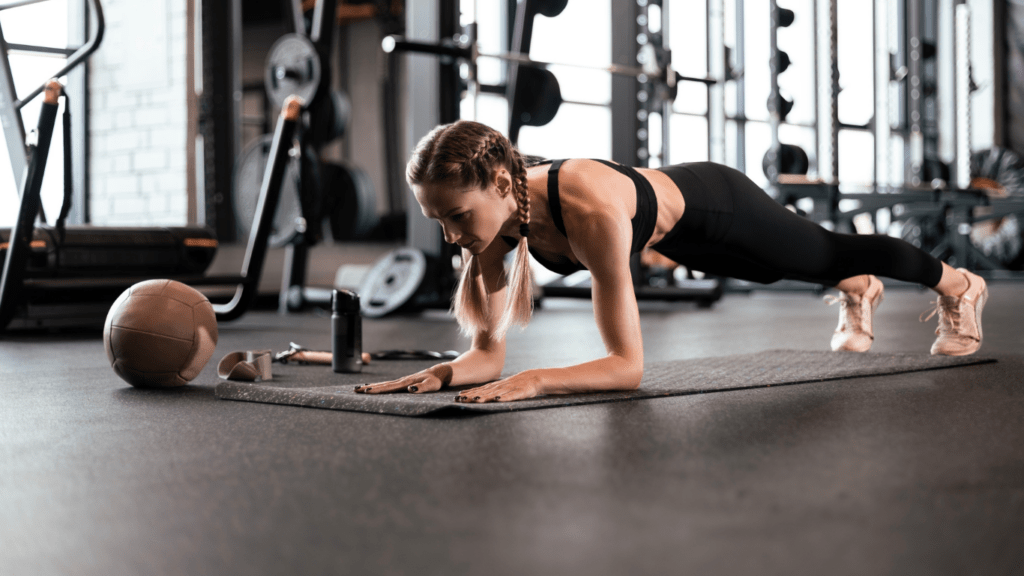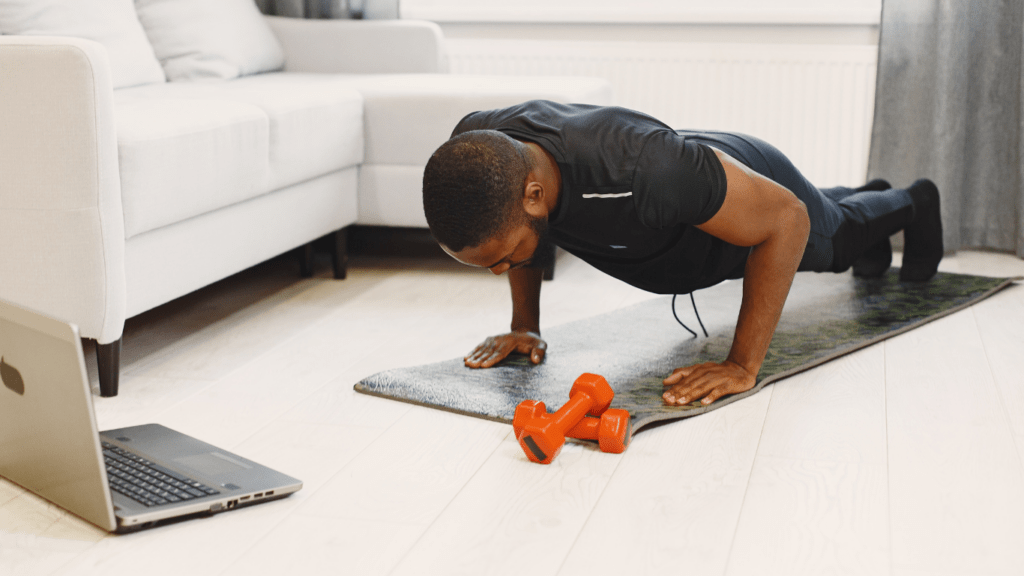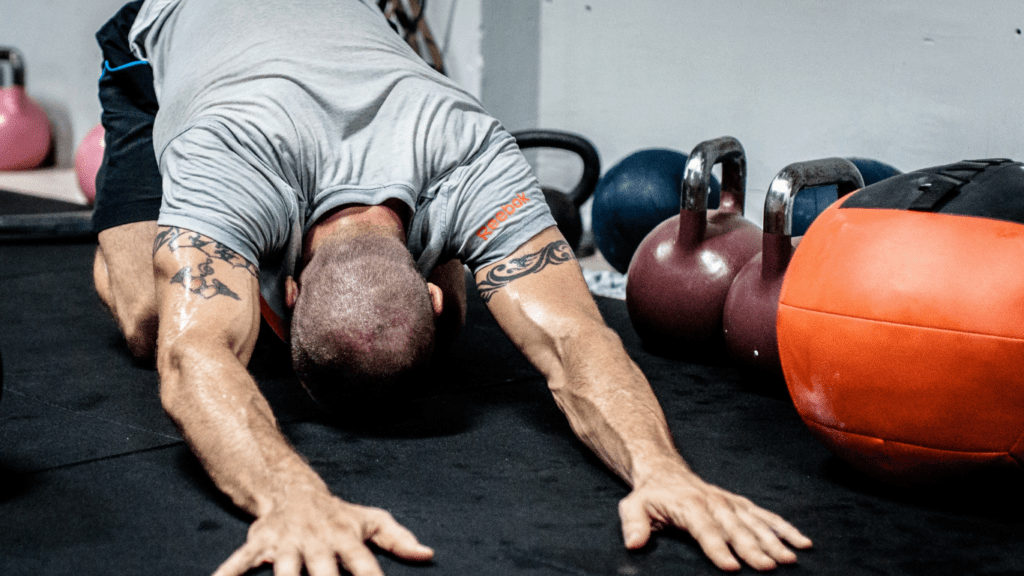Understanding Core Strength
Core strength represents more than six-pack abs—it’s an essential element for overall health. Located in the center of the body, the core includes muscles in the abdomen, back, and pelvis. These muscles work together to stabilize the spine and pelvis, providing a solid foundation for movement.
Core strength enhances physical activities, from carrying groceries to performing athletic feats. It allows for greater efficiency by transferring energy between the upper and lower body. When the core is weak, the body overcompensates, risking injury to other areas like the hips and knees.
Good posture relies on a strong core. The muscles help maintain an upright stance, reducing strain on the spine. As these muscles become more robust, the potential for lower back pain and postural issues decreases. Beyond physical benefits, a strong core contributes to overall confidence.
To strengthen the core effectively, focus on exercises that engage multiple muscle groups. By targeting both the abs and back, I aim to balance increase in core stability and strength in daily activities, promoting resilience and reducing injury risk.
Benefits of a Strong Core
A strong core enhances balance, aiding in everyday movements and athletic activities. Improved balance reduces the likelihood of falls and related injuries. Enhanced stability stems from a robust core, supporting better posture and reducing stress on the spine. This alleviates back pain, a common issue for many. Additionally, core strength boosts overall functional fitness, facilitating activities like:
- lifting
- bending
- twisting
with ease and efficiency. In sports, a powerful core ensures optimal performance by allowing seamless energy transfer. Core muscles, working in tandem, protect internal organs and support breathing, contributing to overall health and well-being.
Top 10 Core Exercises to Strengthen Your Abs and Back

Core strength drives not only physical activities but also supports spine stability. I’ll share ten exercises focused on strengthening the abs and back for enhanced performance.
- Plank
Planks engage the entire core, promoting endurance and stability. Start in a push-up position but rest on forearms instead of hands, with elbows directly under shoulders, and hold the body in a straight line from head to heels. Maintain a neutral spine by looking at the ground.
- Side Plank
Side planks target obliques, enhancing lateral core stability. Lie on one side, stacking feet and resting on one forearm. Lift hips, forming a straight line from head to feet. Switch sides to balance the workout.
- Russian Twist
Russian twists work the obliques and rectus abdominis. Sit on the floor with knees bent, lean back slightly, keep back straight, and twist upper body to each side while holding a weight or medicine ball for added resistance.
- Bicycle Crunch
The bicycle crunch activates the rectus abdominis, obliques, and hip flexors. Lie on your back, lift feet off the ground, and alternate bringing each elbow to the opposite knee, simulating a cycling motion.
- Dead Bug
Dead bugs enhance core stabilization. Lie on your back, raise arms, and legs towards the ceiling, then lower opposite arm and leg towards the floor while keeping the lower back pressed against the ground.
- Mountain Climbers
Mountain climbers are dynamic and elevate heart rate while engaging the core. Start in a plank position, draw one knee towards the chest then quickly alternate, maintaining a steady pace.
- Bird-Dog
The bird-dog exercise improves balance and coordination by targeting the back and core. On all fours, extend one arm and the opposite leg, keeping the body stable. Alternate sides while maintaining balance.
- Hanging Leg Raise
Hanging leg raises focus on the lower abs and hip flexors. Hang from a pull-up bar and lift legs until parallel to the ground, controlling the movement for maximum efficacy.
- Superman
Superman exercise strengthens the lower back and glutes. Lie face down, extend arms forward, and lift both arms and legs off the ground, holding for several seconds before lowering.
- Pallof Press
Pallof presses build core stability and anti-rotation strength. Stand sideways to a resistance band, hold it at chest level, and extend arms outward without allowing the body to twist.
Tips for Safe and Effective Core Workouts
Choosing proper techniques ensures core workouts are both safe and effective. Focus on quality over quantity during exercises. Holding correct form, even for shorter durations or fewer reps, activates core muscles more efficiently and reduces the risk of injury. Incorporating gradual progressions avoids overstraining muscles. Increasing intensity or duration at a manageable pace allows the body to adapt safely.
Listening to your body prevents unnecessary strain. If a movement causes discomfort or pain, modifying the exercise to accommodate your current fitness level addresses this without compromising safety. Utilizing proper breathing techniques enhances exercise performance. Inhaling deeply before initiating a movement and exhaling during exertion maintains stability and supports the spine effectively.
Utilizing a balanced exercise regimen strengthens entire core regions. Integrating a mix of static, dynamic, and rotational exercises targets different muscle groups, promoting uniform strength development in the abs and back. Including rest days is essential for muscle recovery. Allowing time for rest and repair not only aids in muscle growth but also forestalls burnout, ensuring ongoing exercise benefits.
How to Integrate Core Exercises into Your Routine
Integrating core exercises into my routine involves a strategic approach to maximize benefits and efficiency. Starting by assessing my current fitness level helps determine the appropriate intensity and volume of core workouts. I schedule core exercises two to three times per week, allowing rest days in between for recovery and muscle repair.
I aim for balance by incorporating a variety of exercises targeting different core muscle groups, including both static and dynamic movements. For example, I include exercises like Planks and Dead Bugs for stability and Russian Twists and Bicycle Crunches for dynamic engagement.
To seamlessly incorporate these exercises, I often pair them with existing workouts. For example, I add them to my warm-up to activate core muscles before strength or cardio sessions. This strategy not only enhances my overall workout effectiveness but also ensures my core muscles are consistently engaged.
Tracking progress is crucial for maintaining motivation and ensuring improvements. I note the number of repetitions, sets, and any modifications I make to the exercises. Periodically, I reassess my routine to adapt to improvements in my fitness level and to introduce new challenges, preventing plateaus and promoting continued growth.





